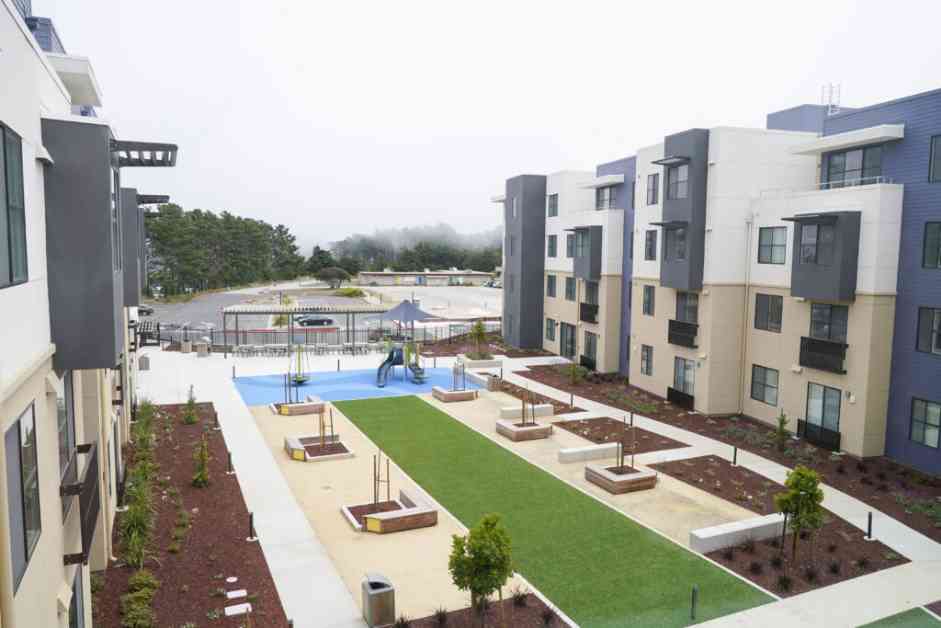California’s Push to Speed Up School Housing Construction for 2.3 Million Units
California is making strides in addressing the housing crisis facing its educators by pushing for the construction of affordable housing units on school district-owned land. With the goal of building 2.3 million units over the next eight years, the state is taking steps to recruit and retain teachers and staff who are essential to the education system.
Success Stories in Affordable Housing Construction
One example of success in affordable housing construction is the Jefferson Union High School District in Daly City. In the past, the district faced challenges with a high turnover rate among its staff, leading to vacancies at the beginning of each school year. However, in 2022, the district took a proactive approach by building 122 affordable housing units on school district-owned land. This initiative has proven to be a game-changer for the district, with 25% of its staff now residing in the new housing complex.
Board member Andy Lie highlighted the positive impact of the affordable housing project, noting that the district is starting the new school year with zero vacancies—a remarkable achievement in the realm of public education. The success of Jefferson Union High School District serves as a model for other districts looking to address the challenges of teacher turnover and housing insecurity.
Legislation and Support for Affordable Housing Projects
In January, legislation was enacted to ease zoning requirements for school districts interested in building affordable housing. This move has paved the way for districts like Jefferson Union High to take the lead in providing housing for both teachers and classified staff. To further support these efforts, the California Department of Education (CDE) will be hosting a housing summit on August 14, bringing together districts with success stories and local and state leaders to share best practices.
State Superintendent of Public Instruction Tony Thurmond emphasized the potential for utilizing the 75,000 acres of undeveloped land owned by schools to build 2.3 million units. This ambitious goal aligns with the state’s commitment to addressing the teacher shortage and improving the overall quality of education in California.
Challenges and Opportunities in Affordable Housing Construction
While the push for affordable housing construction is gaining momentum, some districts have faced challenges in convincing their communities of the importance of such initiatives. School bond measures aimed at funding staff housing projects have met resistance in certain areas, highlighting the need for greater public awareness and support for these efforts.
San Diego Unified School District is among the districts that have set ambitious goals for providing affordable housing to its staff. With a target of opening 1,500 units to house 10% of its employees, the district is leveraging a school bond measure passed in 2022 to make this vision a reality. By investing in affordable housing, districts like San Diego Unified are not only retaining teachers but also creating a supportive environment for both educators and students.
The Role of Research and Resources in Housing Construction
To support districts in their housing construction endeavors, the California School Boards Association (CSBA) has collaborated with researchers to provide valuable resources and guidance. By sharing insights from successful and unsuccessful projects, researchers aim to streamline the process of building affordable housing for educators.
Researchers from institutions like UCLA’s cityLAB and UC Berkeley’s Center for Cities + Schools have developed tools such as maps that identify communities most in need of affordable housing solutions. These resources help school districts prioritize their efforts and maximize the impact of their housing projects.
Looking Ahead: Building a Brighter Future for Educators and Students
As California continues to push for the construction of affordable housing units for teachers and staff, the focus remains on improving the overall well-being of educators and creating a stable environment for students. By addressing housing insecurity and retention challenges, districts are not only investing in their workforce but also laying the foundation for a more equitable and successful education system.
The journey towards building 2.3 million units may present challenges, but with the support of legislators, educators, and community members, California is poised to make a significant impact on the lives of its teachers and students. Through collaboration, innovation, and a commitment to educational excellence, the state is paving the way for a brighter future for all who call California home.
